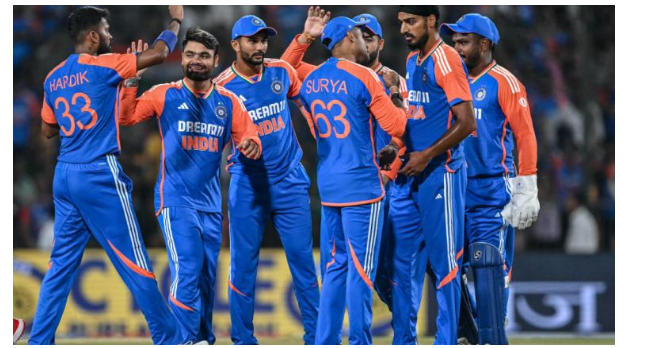How to Create a Media Kit That Gets You Noticed: A Complete Guide for Creators
If you’re a content creator, influencer, or freelancer trying to land brand deals, you need a media kit. Think of it as your professional resume meets portfolio meets sales pitch, all rolled into one slick package. But here’s the thing – most people either don’t have one or they’ve thrown together something that looks like a boring PowerPoint from 2005.
A media kit is basically your chance to show brands why they should work with you. It’s got your stats, your vibe, your audience details, and proof that you’re worth their marketing budget. Without one, you’re like a salesperson showing up to a meeting empty-handed. Not a good look.
What Actually Goes in a Media Kit
Let me break this down in plain English. Your media kit needs to tell brands who you are, who follows you, and why that matters to them. Start with a solid introduction. This isn’t the place to be humble – talk about what makes you different. Are you the go-to person for budget travel tips? Do you make tech reviews that actual humans can understand? Whatever your thing is, own it.
Next up, you need numbers. Brands want to see follower counts across your platforms, but here’s what really matters – engagement rates. You could have 100,000 followers, but if only fifty people actually interact with your content, those numbers don’t mean much. Show your average likes, comments, shares, and click-through rates. Be honest here because brands will check.
Your audience demographics are gold. Brands need to know if your followers match their target customers. Include age ranges, gender breakdown, top locations, and interests. If you know your audience is mostly women aged 25-40 who love sustainable fashion, say that. The more specific you get, the easier it is for brands to see if you’re a good fit.
Making Your Media Kit Look Professional
Design matters more than you think. Your media kit should match your brand’s aesthetic. If your Instagram is all pastel and minimalist, don’t create a media kit with neon colors and Comic Sans font. Keep it clean and easy to read. Use high-quality photos of yourself – not grainy selfies or weird cropped group shots.
Most creators use tools like Canva to design their media kits, and honestly, that works perfectly fine. You don’t need to hire a designer unless you want to. Just pick a template that doesn’t look like everyone else’s, customize it with your brand colors, and keep the layout simple. Two to three pages is usually enough. Any longer and people won’t read it.
Looking at best examples of media kits can really help you understand what works and what doesn’t. Seeing how successful creators structure their information, showcase their metrics, and present their brand story gives you a solid foundation to build from. Pay attention to how they balance data with personality and professionalism with creativity.
What Brands Actually Care About
Here’s something nobody tells you – brands don’t just care about your follower count. They want to know what happens when you post about products. Have you worked with brands before? Include case studies. Show screenshots of successful posts, talk about the results you delivered, and include any testimonials from previous clients.
Your content quality matters too. Include samples of your best work. If you’re a photographer, show your strongest images. If you make videos, link to your top-performing content. Pick pieces that represent what you do best and what brands would actually want to pay for.
Pricing information is tricky. Some creators include a rate card with specific numbers, while others prefer to say “rates available upon request.” There’s no wrong answer here. If you include prices, make sure they’re competitive but fair to your worth. If you don’t, just make it clear that you’re open to discussing collaboration terms.
Keeping Your Media Kit Current
Your media kit isn’t a set-it-and-forget-it thing. Update it regularly – at least every quarter, or whenever you hit a major milestone. Got a viral post? Update your engagement stats. Reached 50K followers? Get those new numbers in there. Worked with a big brand? Add that case study.
Create different versions for different types of partnerships. Your media kit for fashion brands might emphasize different aspects than one you’d send to a tech company. You don’t need to recreate the whole thing, just adjust the emphasis and swap out relevant examples.
How to Actually Use Your Media Kit
Having a media kit is pointless if it just sits on your computer. When you pitch brands, attach it to your email. When brands reach out to you, send it over before they even ask. Keep it saved as a PDF so the formatting doesn’t get messed up, and make sure the file name is professional – “YourName_MediaKit_2025.pdf” works great.
Don’t wait for brands to come to you. Research companies you’d love to work with, find the right contact person, and send a personalized pitch with your media kit attached. The key word there is personalized – nobody wants to read a copy-paste email that could’ve been sent to anyone.
Your media kit should also be accessible on your website if you have one. Create a dedicated page or at least make it downloadable from your contact page. Some creators even link to it in their social media bios, especially on Instagram where brand deals happen constantly.
Final Thoughts
Creating a media kit takes some effort upfront, but it’s absolutely worth it. It shows brands you’re serious, professional, and ready to deliver results. Plus, it saves you time because you’re not scrambling to pull together information every time someone asks to collaborate.
Remember, your media kit represents you when you’re not in the room. Make it count. Keep it honest, keep it updated, and keep it focused on what brands actually need to know. With a solid media kit in hand, you’re not just another creator hoping for partnerships – you’re a professional ready to do business.



